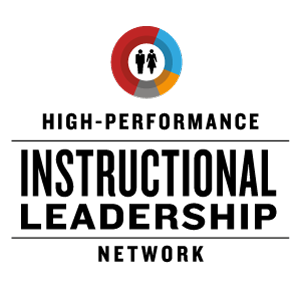Archive for the ‘Guest Posts’ Category
Sunday, January 9th, 2022

Five Ways To Financially Prepare Your Children for College by Craig Middleton offers sound advice for parents who are getting ready to send a child off to college. It makes the point that starting real-world financial lessons prior to leaving home is vital and offers specific ways to make this happen. Teaching students how to budget and giving them real financial responsibility while they are still at home is essential and this article will help. Good luck.
Introduction
-
College is difficult for young adults. It is not just the academics that can be challenging, either. Students also have to manage their own money, often for the first time. This can be stressful for both a teen and his parents. You can make things easier for everyone by following these five tips for helping your children financially prepare for the college experience.
1. Involve Them in the Loan Process
- Your children will likely be paying off student loans long after they graduate from college. They should thus be involved in and prepared for this process. Make sure they understand the terms of any loan and when interest begins to accrue. They should also learn about different student loan refinance plans.
2. Warn About Scams
- Elderly people are not the only ones falling victim to financial scams. Predators may also target naïve students. Talk to your child about common scams and how to avoid them. Specifically, your teen should understand how to spot bogus emails, texts, and calls demanding cash or requesting payment of a fake bill.
3. Teach Then To Budget
- Budgeting is a key part of financial independence. If you plan to give your college student spending money while at college, consider paying one lump sum at the start of the semester. They will then have to learn how to budget that money over the ensuing months. You and your teen should also make a formal budget by writing down expected income and expenses each month. Make sure that you both understand which costs your student will pay, and which ones you will help cover.
- You may also want to give your child a fixed amount of cash to use on certain expenses, such as textbooks. Tell your teen that he can keep any of this money that they do not spend. This will encourage them to look for cheaper options, such as used or electronic textbooks. You and your child should also talk about this budget at the end of each semester. The two of you can then adjust the budget if necessary. After a year or two in college, your kids will understand how they are spending their money and learn how to save up for larger, entertainment-related expenses such as concert tickets.
- They should also realize the importance of making financial tradeoffs. For instance, if your child wants a new car, he may have to work extra hours or sacrifice some outings with friends in order to afford this expense. Learning this lesson as a young adult will make it easier to handle finances once he is completely independent.
4. Let Them Make Mistakes
- Of course, budgeting for the first time often leads to mistakes. Your kid may spend a ton of money on restaurant meals early in the semester and then not have enough cash left over for other bills. It may be tempting to lecture your child in this situation, or to simply fix the issue.
- However, they will not learn anything if you immediately come to the rescue. A few minor missteps should not ruin your teen’s finances, and they should teach him how to better manage money in the future. Instead of admonishing your child, help come up with a solution.
5. Let Them Be Independent
- Similarly, your child should learn that you will not be able to support her financially forever. You do not have to cut him off entirely, however. Instead, slowly cut back on the amount of money you give each semester. Even before she goes to college, you should also have her start paying at least two of her bills each month. If she has to use her own money to cover a cell phone or iTunes bill, she may be more judicious with all purchases. Once your child leaves for college, she will be one step closer to adulthood. To fully prepare for life on her own, make sure she understands how to manage finances.
Craig Middleton
- Craig is a New York City-based retired business consultant, who is an expert in education and cultural trends. He has a Masters of Business Administration and a Masters in Education from St. Johns and loves sharing his knowledge on the side through his writing. If you have any questions or comments you can direct them to Craig at craigmiddleton18@gmail.com.
Also, check this out.

How to buy a house when you have student loan debt – Student loan debt doesn’t automatically preclude you from buying a house. While it does make the process more challenging, you can become a homeowner with student debt. Share with college grads you know. @zlwichter @Bankrate
Posted in Guest Posts | Comments Off on Five Ways To Financially Prepare Your Children for College by Craig Middleton
Thursday, February 27th, 2020

Introduction
- Learning should be a lifelong thing. It should also be something you encourage outside of traditional education. When you send your child away each morning to school, you might think that learning stops when they close the doors for the day or when homework is done. But the truth is, your child should be constantly learning throughout the day. Children always need to be stimulated for proper brain development. That means that from the time your child comes home from school to their bedtime, they should be learning something, whether it’s a simple rule or an important concept. This will not only keep him or her brain working, but it’ll also make them more eager to learn while they sit in a classroom.
1. Help Your Child Discover Interests and Passions
- Expose your child to different experiences so that she can discover what she enjoys doing. Taking her to places like museums, theatrical performances, zoos, etc. will give her a variety of experiences she can choose from and learn from. You can also take your child to your local library to check out books on a variety of topics. He can pick out books he’s interested in, which can help him discover his passions. This can also help determine what he chooses as a career path down the road.
2. Share Your Passions
- You can also share your own interests with your kids. Sharing what you enjoy doing will spark curiosity, dedication and creativity in your children. It will also show them skills that are specific to your interests. You can talk to your kids about a new recipe you want to try, interesting articles you came across, or funny experiences you’ve had throughout your life. This process encourages learning. While not in a traditional classroom setting, sharing your passions and experiences with your children can help them develop a desire to learn. As they take in new information from a person they trust and look up to, they’ll be more open to learning experiences at school.
3. Provide Hands-On Experiences
- Hands-on experiences are great for solidifying a concept and bringing it to life. They also make learning a lot more enjoyable because they involve activities that keep children busy and engaged. For example, if your child is taking a class in earth science, take him outdoors to collect rocks. Or if she’s learning about aquatic animals at school, take her to the aquarium. These experiences will make learning an adventure for your child and make her more willing to take in and retain new information in class.
4. Make Learning Fun
- To some kids, learning can be a bore, especially if it’s one of their least favorite subjects. Did you know that you can turn the dullest subjects into a learning adventure? Songs, academic games, scavenger hunts and creative activities like art projects, music or writing are all great ways to make learning a fun and enjoyable experience for kids. Many teachers are doing this as well, so if you’re doing it at home, you’re providing your kids with double the fun and double the learning.
5. Promote Reading
- Being a lifelong learner isn’t about learning specific concepts, lessons and hard skills like negotiation training. It’s more about the soft skills you gain from certain experiences. Reading, for example, helps children develop the ability to ask questions, test hypotheses and learn other points of view. Regardless of the subject, reading helps kids perfect these skills and more.
- This means that you should keep a ton of books in your home to teach your child to love learning. Keep engaging and immersive stories on hand to keep your kids interested and eager to dive in.
- Many kids don’t enjoy learning, especially if it involves sitting in a classroom all day. What matters is how you encourage learning at home and away from the classroom. Your child will thank you for it later.
Craig Middleton
- Craig is a New York City-based retired business consultant, who is an expert in education and cultural trends. He has a Masters of Business Administration and a Masters in Education from St. Johns and loves sharing his knowledge on the side through his writing. If you have any questions or comments you can direct them to Craig at craigmiddleton18@gmail.com.
Posted in Guest Posts | Comments Off on Five Ways to Instill a Love of Learning in Your Child by Craig Middleton
Thursday, January 21st, 2016
Five Ways To Make Essay Writing Engaging For Students by Julie Petersen offers excellent advice for teachers, parents, and students about how to make writing more exciting and interesting. You should also check out the high-quality articles for educators and parents at Julie’s fine website AskPetersen.
Introduction
- Sometimes, students are natural writers, and the challenging task is getting them to stop and move onto the next assignment. But more often than not, it takes some creativity to get students excited about writing academic essays and papers. Luckily, there are some effective ways to inspire them to want to write and to give them the guidance necessary to help them succeed. Here are some tips to get your student(s) genuinely interested in writing.
1. Read
- It cannot be said enough that reading and writing are intrinsically linked, for better or for worse. By encouraging your students to read more, they will not only gain more of an appreciation for the written word, but they will have a bigger vocabularies, better grammar, and more ideas to inspire them when they write. To get students to read, you can read aloud in class or assign reading several times each week. Once the students have read a work, have a group discussion about the reading assignment and get them talking about the piece.
2. Make It Applicable to Real Life
- Do you have a class full of students that can’t stand writing academic essays for the sake of writing and getting a grade? Try a new approach in which they have to write things like letters to a friend, thank you notes after a holiday, or even a description of a person they are close to. They might be more interested in writing when it’s something they see as useful. Once they see the value in writing, you can go back to writing essays, poetry, prose, or research.
3. Suggest Inspiring Tools
- One of the best ways to get students interested in writing is to give them tools that allow them to believe they can do it. Here are some tools that can offer help when it’s needed.
-
Hemingway Editor: Sometimes students need some help making their message clear. Hemingway Editor highlights any sentences that are too long or difficult to read, so that the student can rewrite these sections.
- Readable: Readable gives your writing a grade level at which most people could easily read your work. Make sure this grade level isn’t so high as to be considered difficult to read. But also make sure it’s not too low.
- EssayMama essay writers: Essay Mama can help students come up with great writing ideas. They can also help with editing, proofreading, and formatting academic essays.
- Thesis Builder: Need some help coming up with a thesis for your paper? Thesis builder can help with that by asking some questions about your topic and giving you some options for a thesis.
- Help.PlagTracker: PlagTracker will find any instances of plagiarism in your student’s paper and eliminate them. The website can even rewrite these sections with original content.
4. Show Off The Writing
- Reward and inspire your best writers by showing off their work. You can do this in a number of ways. You can (with their permission) read their work aloud to the class. Alternatively, you could create a book with the best stories. These books could be distributed to your students alone or multiple classes. If you want to be a bit more subtle about it, you can post students’ work to a bulletin board or hang them in the hallways at your school. Whatever you do, make sure to let the students know that their work was featured because you enjoy their writing and look forward to what they will write next. (Doug: You can also post their best work on a class blog.)
5. Allow Illustrations
- This might not be as important for older students (in High School or college), but younger students might feel discouraged when writing their essays if they can’t find the right words to say what they want to say. By allowing illustrations as part of the assignment (without compromising on the written requirements), students may feel more at ease about saying exactly the right thing. It may also provide further inspiration to tell their story in writing.
- Whatever method you choose to help inspire your students, remember that everyone is different, and what works well for one student might not work for another. Try these tips one at a time to see what works and what doesn’t. And no matter what, remember that the best thing you can give to a student who is struggling to write is encouragement. Let them know that writing takes time and practice. If they keep at it, they’ll be successful.
Julie Petersen
- Julie is a private English language tutor and a content marketing specialist. She is the author of educational AskPetersen review blog, and a contributor to such websites as FreelanceWrite.About, Business.com, and Teach.com. Contact Julie on Linkedin.
Posted in Guest Posts | Comments Off on Five Ways To Make Essay Writing Engaging For Students by Julie Petersen
Wednesday, July 22nd, 2020

Five Ways You May Be Pushing Your Teenager Away by Ella Woodward offers sound advice for any parent. Parenting a teen can be tricky and no one is perfect, but this will help you focus on the things that can get in the way.
Introduction
- Finding the right parenting technique that works for you and your child will encourage them to be respectful and maintain a healthy relationship with yourself and others. This is all well and good, but when puberty hits, things can become very difficult for everyone in your household. Once you are a parent of a teenager, you will need to adapt your methods and find a way to keep that relationship strong. As your teenager starts to become more independent, you need to make sure you keep them safe, without pushing them away.
Treating Them Like a Child
- All a teenager wants is to feel grown-up, and they will tend to prioritize areas and people who make them feel like that the most. The more you respect your teen and make them feel mature, the happier they will feel at home. They will still have their childish moments and mood swings as their hormones settle, but it is your job as a parent to encourage their inner adult to come out.
Smothering Them
- Smothering your teen or making them feel that way will push them away, but you need to make sure you know what they are up to. Finding a way to ask questions and lay down rules without making them feel smothered is a skill that you will improve over time. You just need to keep in mind that if you are making your teenager feel smothered with affection, then they will want to flee.
Giving Them Too Much Freedom
- You may think that giving your teenager freedom will keep the peace and make them respect you, but this is not a good way to maintain a healthy relationship with your teen. Too much freedom too soon can lead to them ending up in social scenes that they are not prepared for and peer pressure that they don’t know how to handle. This could lead to a rebellious teenager and can even put their life at risk.
Not Listening
- Being a teenager is a confusing and difficult process for some. They will have a lot of thoughts, questions, concerns, and opinions circling their minds, so you should do your best to make time for them and listen to their thoughts and interests. If you don’t, they will end up looking for someone who will or they will keep it to themselves, which can lead to a lot of problems for them in the future.
Making Their Home Environment Unpleasant
- Home should be a safe, secure, and happy place for the entire household. When you are stressed all the time and emit negative energy, it will affect your teenager, as they have no other choice but to live with it. If you feel like you are creating an unpleasant home environment because of your teen’s behavior, then you should use these tips for managing teens. Following these tips can help you deal with this challenging situation and improve the home environment for the entire household. There is no such thing as the perfect parent and looking after a teenager isn’t always easy. Every child is different, so the advice that exists may not work for everyone, but there will be things out there that will work for you.
Ella Woodward
- As a woman making her way to the top of the corporate ladder, Ella Woodward has the expertise and business knowledge to guide readers through the latest developments in the fast-paced business, financial, and investment spaces. She has the contacts, instincts, and insight to discover the latest deals, trades, and organizations that are worth your time. Being in constant demand, she’s made her blog a resource where you to see a small selection of the work she’s done over the years. If you are interested in having her do some work for you email her at ella@businessella.com.
Posted in Guest Posts | Comments Off on Five Ways You May Be Pushing Your Teenager Away by Ella Woodward
Monday, February 7th, 2022

Four Benefits of Employing Toys for Education by Craig Middleton explains why toys belong in just about any learning environment and activity. Are there age-appropriate toys in you home and in your child’s classroom? Thanks, Craig.
Introduction
- Over the last century, parents and teachers have found many creative avenues for educating children. The theories on education and how children learn are endless, but some of the tools are timeless, such as books and instruments for writing. One of the most enduring tools for educators of children has been toys. Because children associate toys with having fun and entertainment, toys also have the ability to make learning fun.
- The word “toy” conjures images of an expansive array of manufactured goods for children, as there is no limit to their many shapes, sizes and uses. There are puzzles, games, dolls, blocks, and more. Here’s a look at how toys help build learning foundations and lasting outcomes in the classroom.
1. Greater Empathy and Emotional Intelligence
- When children watch toys during a lesson, they are watching a scene playout, much like a movie. For example, if you want to teach a child about sharing, you could take two figures, such as the famous Barbie made by Mattel, and demonstrate how friends take turns. This demonstration will resonate better than being told. It also builds on a child’s ability to understand the needs of others around them.
- Toys also demonstrate how to respond to situations, and how uncomfortable situations can be resolved. Children look to adults to answer these types of questions, but adults themselves don’t always make the best role models, except when they use toys to show how to do it right. Through the use of toys, a discussion can take place about why someone felt the way they did and how someone else can help make them feel better.
2. Increased Creativity
- Toys help children expand on their creativity. They teach them to fill in the gaps and to imagine alternate endings. For example, if an adult utilizes a puppet for storytime, and the puppet is a whale, the child knows a whale must have water in its environment, and so the child’s mind fills in the environment that is missing. While the whale may be attached to a hand, during the story, the child can imagine the whale is at a dock, or some other place the story dictates.
- Give the child the same toy to play with on their own, and they will create their own stories. New scenes will be created in their minds. Not only are they learning to create dialogue, but they are learning to create images.
3. Improved Learning Retention
- When children learn, new paths are created in their brains that they can return to in a similar situation. This is an oversimplified explanation for how learning works, but since children are more apt to pay attention when a toy is utilized when they encounter the same problem again, they can draw on what they learned through the toy.
- This is especially critical for developing problem-solving skills. Children can look back to what they learned through the use of toys and apply them to problems in everyday life as well as later in their educational development.
4. Assists with Motor Skills
- Toys can also be used to assist with developing motor skills. This is especially important for children with disabilities who may require more work to reach certain milestones such as using writing instruments and eating utensils or tying shoes. By using playtime to teach and practice these life skills, children are more eager to participate. The result is practice that is fun.
- Educators often overlook the positive achievements that can be made by employing toys in the classroom. Yet, toys have always been strongly associated with developing creativity and emotional intelligence in children. If a child were to walk into a classroom and see only books and a blackboard, they might sense they had a dull day ahead of them. Add some colorful puzzles, games, and toys to that same classroom, and it becomes an environment that is friendly and ripe for exploration. The same if true for their home environment.
Craig Middleton
- Craig is a New York City-based retired business consultant, who is an expert in education and cultural trends. He has a Masters of Business Administration and a Masters in Education from St. Johns and loves sharing his knowledge on the side through his writing. If you have any questions or comments you can direct them to Craig at craigmiddleton18@gmail.com.
Posted in Guest Posts | Comments Off on Four Benefits of Employing Toys for Education by Craig Middleton
Wednesday, July 29th, 2015
Four Easy Steps to Touch Typing by Adam Fort offers tips to improve typing skill for adults and children alike. In a day when efficiency can make the difference between success and failure, you can ill afford to be a less than proficient typist. With these tips, all you need is the commitment to practice.
Adam Fort
Introduction
- Fed up with how long it takes you to type an email or a document? Does your amateurish typing leave a lot to be desired? If typing efficiency is costing you valuable hours in productivity, maybe it’s time you start working on improving your touch typing efficiency. Computers or laptops have become an integral part of day-to-day life. From emails to presentations, from college assignments to office presentations, everything requires the skill of typing. Typing fast and accurately is a skill that proves absolutely invaluable for nearly every job. Follow these four easy tips to boost your touch typing speed and become a typing whiz.
Use correct techniques and position
- The first step is to use correct sitting position and keyboard positioning. It goes without saying that you work better when you are in a comfortable position. The same thing applies to typing. Choose a comfortable chair and sit straight with your back upright, and your eyes firmly fixed on the computer screen. If you slouch, you will get fatigued easily. Also, make sure the room has sufficient lighting and ventilation. (Doug: Also consider standing up like I do. You can now buy desks that go up and down so you can change positions while you work.)
- Position your keyboard in the correct position and use both of your hands for typing. Position your fingers on the home row keys. You should be able to move your fingers across the keyboard. With proper finger placements, you should be typing with all ten fingers including your pinkies. The goal of this proper hand placement is that you do not have to move your hands while typing. This way you can focus more on your touch typing accuracy and speed.
Avoid looking at the keyboard
- After you have positioned yourself comfortably, start typing. Assess your current typing skills so as to understand your typing speed and accuracy. This will also give you a fair idea about how much effort and time you need to put in improving your typing speed. The next step is to resist the urge to look at the keyboard while typing. While riding a bicycle, do you look at the pedals or road? Initially, it is hard not to look at the keypad. But, no matter how difficult it is, you need to eliminate the habit of looking down while you type. Adopt military level of discipline and look at the screen. Familiarize yourself with finger placements and let your mind guide your fingers to type correct keys.
Practice, Practice and Practice
- Just like in any other field, practice is the key to success. You need to remember that you can’t excel your typing speed in just one day; but you can definitely improve it drastically. However, it is important to practice in the right way. Practice as much as possible and do it with extreme patience. Make your practice more interesting by writing emails, chatting with your friends, or playing interactive typing games on internet. By the way, average typing speed is only 41 words per minute.
Use online typing tests
- The best way to practice your typing speed is by taking online typing tests. These tests are developed by typing experts and professionals for making your typing process smooth and fast. Some of these tests add extra remedial measures based on your assessments. These remedial lessons are individually tailored to focus on learner’s individual progress, and therefore speeding up and focussing the learning process. These online tests can be taken according to your comfortable timings. Ratatype.com, TypingTest, and TypingWeb for iPhone typing offer convenient ways to test your touch typing speed and accuracy. They also offer extra remedial measures that are tailored to individual’s progress and performance. These remedial measures are easy to understand and also help in keeping a track of progress. This allows the learner to speed up and focus the learning process.
Acquire the Skill
- Typing is not an inherent skill. It is an acquired skill, and with proper techniques and tools, one can improve his typing speed as well as accuracy. Apart from saving money and time, fast and correct typing offers several benefits. When your typing speed is good, you stay in a state of flow. This allows you to focus your energy on words and message, rather than on typing skill. Your mind works faster when you are typing without interuption. So, try the above mentioned four easy steps and you too can type like a professional.
- Doug: I may be hard to shift from the hunt and peck two finger approach, but it will pay off in the long run. An added benefit to typing faster is that you will end up writing more, which will improve your writing skill. The only other thing you will need is a skilled editor who gives honest feedback. This is the best way to lose bad writing habits. Thanks Adam.
Posted in Guest Posts | Comments Off on Four Easy Steps to Touch Typing by Adam Fort
Friday, October 8th, 2021

Four Side Hustles To Start in College by Craig Middleton offers some good ideas for college students who are trying to generate some income to offset student debt. While you need not limit yourself to these ideas, this should get you thinking. Also, check out this post on 7 Online Business Models That Are Similar, Better Than, or Alternative to Dropshipping by Wei Linchao at best Fulfill.
Introduction
- Are you a college student looking for ways to make money, but you aren’t sure how you can get started? Perhaps you are tired of working retail or food service, or you need something that is flexible instead of demanding when it comes to working. Today, more young people than ever are starting their own side hustles and becoming entrepreneurs in the process. Discover how you can find a side hustle that will fit your needs and help you earn the money you need while still succeeding in your college studies.
1. Start a Dog Walking or Pet Sitting Business
- If you love animals, starting a dog walking or pet sitting business might be the solution you are looking for. Dog walkers typically work during the day, and can sometimes handle more than one dog at a time. It’s crucial that you know your limits and don’t try to walk too many dogs at once. You’ll need to make sure they get along with one another and pick up after any messes they make.
- As a pet sitter, you can watch dogs in your home or someone else’s. After you’ve tended to the animal’s needs, you are generally free to study or relax. Many dogs and cats simply find having the presence of another human around to be comforting, so hanging out on the couch might be all they need to calm down. Some people choose to run both types of businesses. Start off small and see how much you can handle while juggling college at the same time. In many cities, you can also work for agencies who do the booking for you.
- Etsy has grown and developed from a small website where people could have handmade items to a major marketplace where both handmade and vintage sales thrive. if this type of work appeals to you, think about what you would like to provide your customers. Make sure to take clear photos and understand how to optimize search engine optimization (SEO) so people who search for your products find them easily in the results so you can improve the sales process. One positive factor about running an Etsy store while in college is that you essentially run your own business, so there is no need to ask for time off. Just make sure that your crafts are unique so you don’t end up competing with inexpensive imported goods. Check out the competition first.
3. Deliver Food On Your Own Time
- Consider working as an independent contractor for a company like UberEats or DoorDash and deliver food to customers all around your area. If you live in a big city or a location that has a lot of tourists, this can be a good way to earn money. You can deliver on days that are busy for you and take off when you need to. It’s important to take care of your car if you decide to deliver food for a living. However, you can usually earn more working for yourself than you would by being traditionally employed through a company, and it is possible to set your own hours as well. The same applies if you want to work for companies like Uber or Lyft.
4. Get Handy With Alterations
- If you’re handy with sewing, consider working as a seamstress. Providing clothing alterations allows your customers to have a customized fit for their needs. This could be as simple as hemming pants or even making a skirt or dress fit better. You can change your customers a decent markup for altering their clothes and you don’t need to work long hours or even keep a specific schedule much of the time, as long as you get the items completed by when you promised. Sewing even comes with health benefits such as brain growth and can reduce stress, which is ideal for many college students.
- Working a side hustle in college doesn’t have to be difficult. Find something that catches your interests and allows you plenty of time to study. You can set your own prices or work the hours that you feel are best for your lifestyle, allowing you to make money while getting ahead on your life goals. Just don’t let your side hustle compromise your grades.
Doug’s Hustel
- I played in a rock band when I was in college in the late 1960s. It helped pay the bills and it sure was good for my public presentation skills. There is lots of work for part-time musicians and even classical musicians can get party gigs. People with artistic skills can also find work doing jobs for small businesses that can’t afford in-house artists. Your computer skills can also help you land work on the side. In any case, try to use skills that you are trying to improve to further your future career path if you can. Good luck.
Posted in Guest Posts | Comments Off on Four Side Hustles To Start in College by Craig Middleton
Monday, December 14th, 2015
Four Study Time Tips for Parents of Children with ADHD by Vee Cecil tells a touching story of how one parent has dealt with a child with ADHD. Vee has done research that other parents and even teachers can use to help these kids. This post also contains many links to useful Internet resources on the topic. Please share with other parents you know who are in this same situation.
Vee Cecil
- Vee keeps busy by being a wellness coach, personal trainer and bootcamp instructor in Kentucky. She also recently launched a blog where she shares her passion for health by writing about her favorite tips, activities and recipes.

Vee’s Son Hard At Work
In Her Own Words
- I know from experience that schoolwork and studying can be exceptionally difficult for kids with ADHD. My son was recently diagnosed with ADHD, but prior to his diagnosis, we spent many painful evenings trying to help him get through his homework. And while the homework was always completed, my son, his dad, and I were often left feeling exhausted and frustrated.
- Now, that he’s been diagnosed with ADHD, I’ve been doing some research around what we can do to make study time easier for him. Here are four study time tips that I plan to try with my son and that I think will be very beneficial for other parents of children with ADHD.
1. Identify and Remove Distractions
- One of the best study time tips is to ,a href”http://bit.ly/1O4HDWn”>identify distractions. By identifying the noise, objects, places, etc., that are distracting your children with ADHD, parents can help students choose a better place or situation for studying. Setting up a special work area for your child outside of their room can be a great help. Make sure the area is painted a neutral color, that there is plenty of room for them to move around, and that there are minimal distractions in the work area. Music or white noise may be a good thing to turn on to help a student with ADHD focus. There may be a little trial and error that goes into identifying and eliminating the distractions, but the time will be well spent.
2. Encourage Active Reading
- A page of nonfiction text may be daunting for a student with ADHD, because they often contain pictures, captions, charts, headings, subheadings, and other text features that pull the focus away from the main text. Active reading techniques are especially helpful for these students, because they encourage them to look at the page, read headings and captions, and look at photos before needing to concentrate on the job of actually reading the text. These pre-reading techniques also prepare the student for reading the text because it gives them a chance to think about the main ideas prior to reading.
- Other active reading techniques include skimming the chapter, taking notes while reading, highlighting, and annotating text. If you’re not sure how to encourage active reading, your child’s teachers may be able to offer tips and more support.
3. Enable Moving and Fidgeting
- Honestly, nobody likes to sit still for a long period of time, and even people without ADHD can find it difficult to do so if they are studying or reading something difficult. That’s why one of the best study time tips for parents of children with ADHD is to enable them to move and fidget. One strategy is to allow your child to walk around while he is studying. Walking while studying works well for reading, flash cards, practicing a second language, etc. Better yet, consider purchasing a standing desk. These are desks that go up and down so that the user can either stand or sit depending on how they feel. (Dr. Doug uses one.)
- Another study time tip for students with ADHD is to use fidget tools that enable them to fiddle with something small at their desk that will not distract the whole class or that will help them to focus while studying at home. Fidget tools may be stress balls, smooth rocks, small Koosh balls, or other similar objects.
4. Read Out Loud with a Four-Legged Friend
- One study tip that helps students with ADHD read and process study materials is to read out loud, preferably with a four-legged friend. A recent study found that children who read aloud to service dogs improved their reading skills by twelve percent. Reading aloud with a dog means that students are using visual and auditory processes to support studying and learning and by petting or touching the dog students get a tactile distraction that helps them focus. So, if you have a four-legged family member, try incorporating them into reading time whenever possible.
- Similarly, creating a rhyme, song, or rap is a twist on reading aloud. If students are trying to remember a series of steps or a list of items in a particular order, it often helps if they turn the material into a rhyme, song, or rap. If you’re not convinced of the power of this study tip, think about how you learned the alphabet or the order of the planets. Chances are, you still sing the alphabet and you remember something about your Aunt Sally ordering nine pizzas when thinking about the planets.
- Finding the right study time tips for a child with ADHD will take a few tries. I definitely expect some trial and error in figuring out what works best for my son. But if parents and children work together, more productive studying and reading sessions at home can be achieved. And who knows? In the end, they may learn to like study time.
Posted in Guest Posts | Comments Off on Four Study Time Tips for Parents of Children with ADHD by Vee Cecil
Friday, May 22nd, 2020
Four Tips for Getting the Most Out of Your College Education by Craig Middleton offers advice that all high school students should consider. It’s also good for people wishing to change to a career that requires some college. I would add that you should also realize that learning doesn’t end with graduation. In a sense, learning just starts then so do your best to see yourself as a life-long learner.
Introduction
- Some people think that you have to go to one of the best universities to get a good education or that your success depends on starting college right out of high school. Neither of these perceptions is accurate. No matter where you go or when you start, you get out of your college education what you put into it. (Doug: That’s true for life in general.) Your college years are yours to do with what you will, but here are some ideas of how you can make the most of the time, energy, and money that you invest in your education.
1. Set Your Own Timetable
- College degrees are often categorized by the estimated time that it takes to complete them, e.g., two-year degrees or four-year degrees. Do not let this intimidate you or pressure you to finish within a particular time frame. It’s actually a rarity for most students to finish a bachelor’s degree in four years, and there are people who take the better part of a decade to finish. This occurs for a number of reasons. Some are nontraditional students who already work a full-time job and have to fit classes around their current work schedule. Others have trouble obtaining financial aid so they can only take a few classes per semester, or else they change majors and have to take all new prerequisites. What works for most students does not necessarily work for everyone. You should set a timetable that works for you. For example, work at your own pace online college courses may fit better work at your own pace online college courses may fit better into your existing lifestyle.
2. Make Connections With Professors and Other Students
- The professors that teach your classes schedule time specifically to make themselves available to help students who are struggling with the course material. If you are having difficulty, you should take advantage of this opportunity for some one-on-one instruction. However, it is not only students who are struggling who should make an effort to connect with professors. Finding a mentor, that is, someone who can help guide you along your chosen path is important not only as a student but once you embark on a career. A professor can be an excellent mentor, so you should make some effort to get to know them and decide who would most benefit you with professional knowledge, wisdom, and guidance.
- The friends you make in college may be the closest and most faithful you will ever make in your entire life. Although it can be difficult, especially if you are an introvert, put in the effort to get to know some of your classmates. Not only will this benefit you socially, but the friends you make now may later be part of your network that helps you find the job of your dreams. (Doug: While Greek life may not be right for some, it can be a big benefit in terms of forming a network of friends who can add value to your life. It worked for me. Just avoid the houses that feature a regular binge drinking and treating women as objects.)
3. Do Not Overthink Your Choice of Major
- Most people choose a major that they think will provide them with the necessary skills for their chosen career path. However, this may be less important than you think. Most career opportunities, including those that involve post-graduate studies, only require a bachelor’s degree as a prerequisite. The specific field of study is often a secondary consideration.
- Therefore, when you’re choosing your major, think less about your future career prospects and more about playing to your strengths. In other words, choose a field of study that excites and energizes you. This will provide the intrinsic motivation you require to complete your degree. Above all else, choose the major that you want to study. Do not give in to pressure from parents to pursue a major you’re not interested in because they think it will lead to a higher paying job.
4. Take Advantage of Unique Opportunities
- There are opportunities that are generally only available to college students, such as research assistantships, internships, and study abroad. Take advantage of these while you can. Not only can they help you on your career path, but they also broaden your horizons in immeasurable ways. (Doug: Keep in mind that internships and the like are more abundant and diverse in large urban areas. My daughter went to college in New York City and had two high-quality internships.) Most of all, remember that the more you put into your college education, the more you get out of it. Therefore, try to arrange your program so that you can put in as much as you can without burning out.
Craig Middleton
- Craig is a New York City-based retired business consultant, who is an expert in education and cultural trends. He has a Masters of Business Administration and a Masters in Education from St. Johns and loves sharing his knowledge on the side through his writing. If you have any questions or comments you can direct them to Craig at craigmiddleton18@gmail.com.
Posted in Guest Posts | Comments Off on Four Tips for Getting the Most Out of Your College Education by Craig Middleton
Saturday, May 31st, 2014
Four Ways the Internet Can Make You a Better Teacher by Jennifer Smith will help teachers and veterans use the Internet more effectively as they try to help students learn and engage in their own learning. Whether educators have time to attend a brick and mortar institution or utilize masters of education online to further their qualifications, there are always ways to improve as a professional. While it is written from the view point of a beginning teacher trying to jump start a career, it can help teachers and parents of any age. Jenna is a freelance writer who has been blogging since college. Her writing topics vary from frugality to fitness. When not writing you can find her walking her dog or playing tennis! Thanks Jenna
Follow Your Dream
- So you have dreamed of being a teacher since you were a little kid. Unfortunately, with education budgets being what they are, finding a school placement has been harder than you thought it would be. In the mean time, especially if you want to keep your teaching skills sharp, you can probably pick up a few tutoring gigs. You might even be able to parlay that into your own tutoring business.
- There are a few big benefits tutoring offers that traditional school placements do not:
You can pick your own class size which is definitely not the case if you were planning on working in the public school system.
You can set your own rates. Tutors can make more per hour than teachers.
All of your classroom materials are completely tax deductible.
To some extent, you can have class wherever and whenever you want.
If starting your own tutoring business or just taking on a few tutoring clients is something that interests you, or if you already have a teaching job, here are a few things you can do to further hone your teaching skills.
Posted in Guest Posts | Comments Off on Four Ways the Internet Can Make You a Better Teacher by Jennifer Smith















